Answered step by step
Verified Expert Solution
Question
1 Approved Answer
STA1DCT Assignment 4 Name: Student Number: Please read the instructions/hints in italics. When preparing your submission, you should delete the italicised text (including this
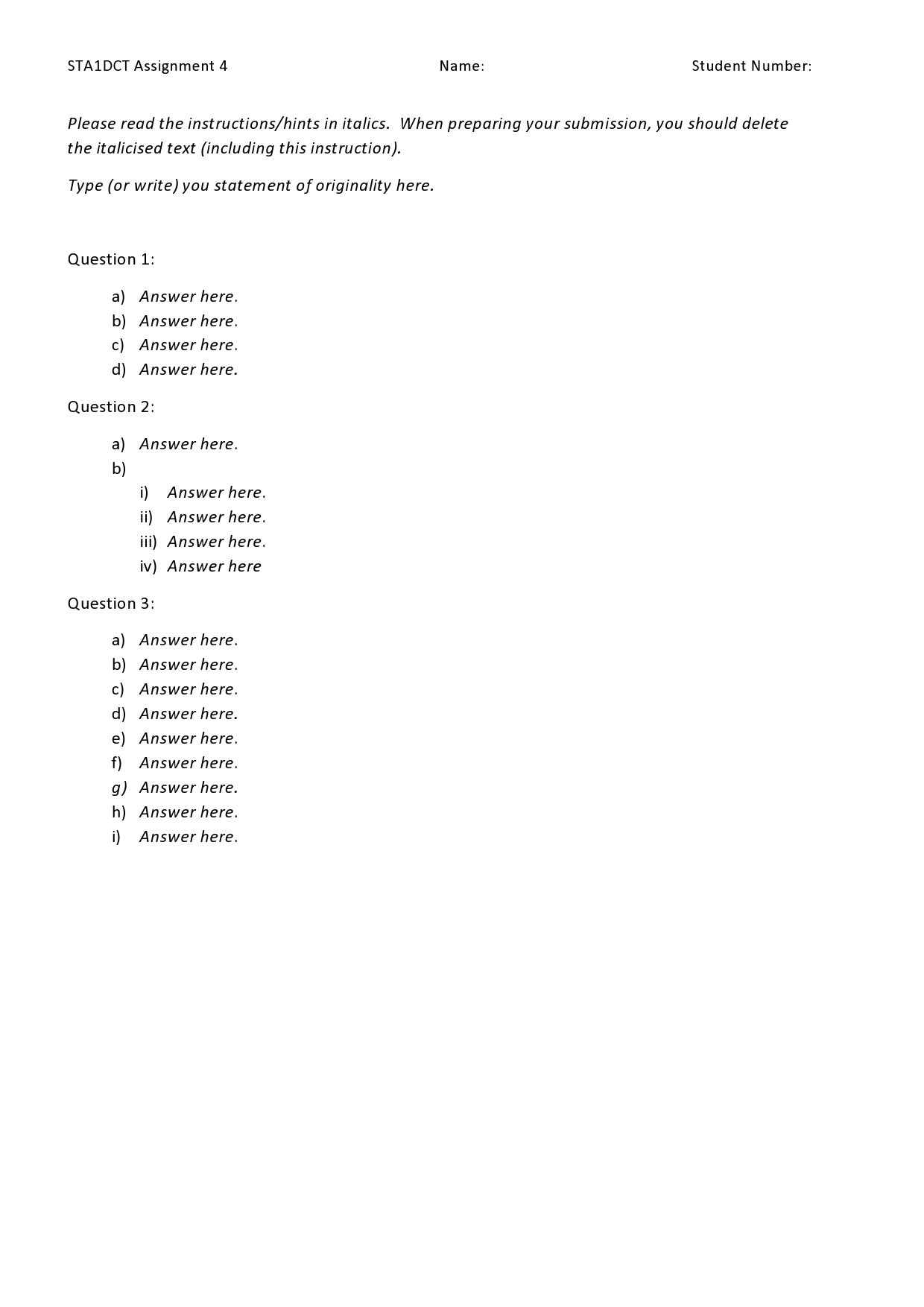
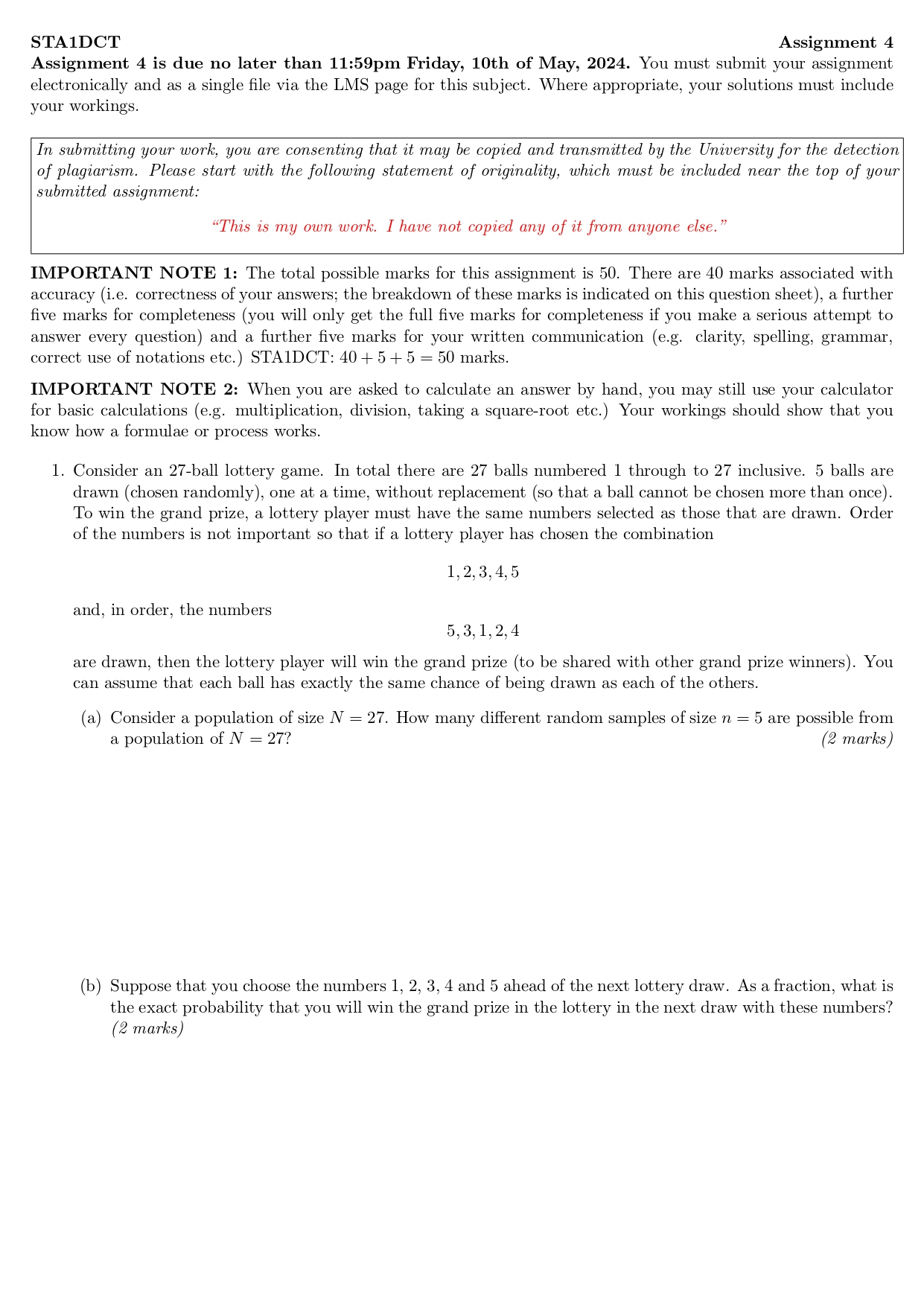
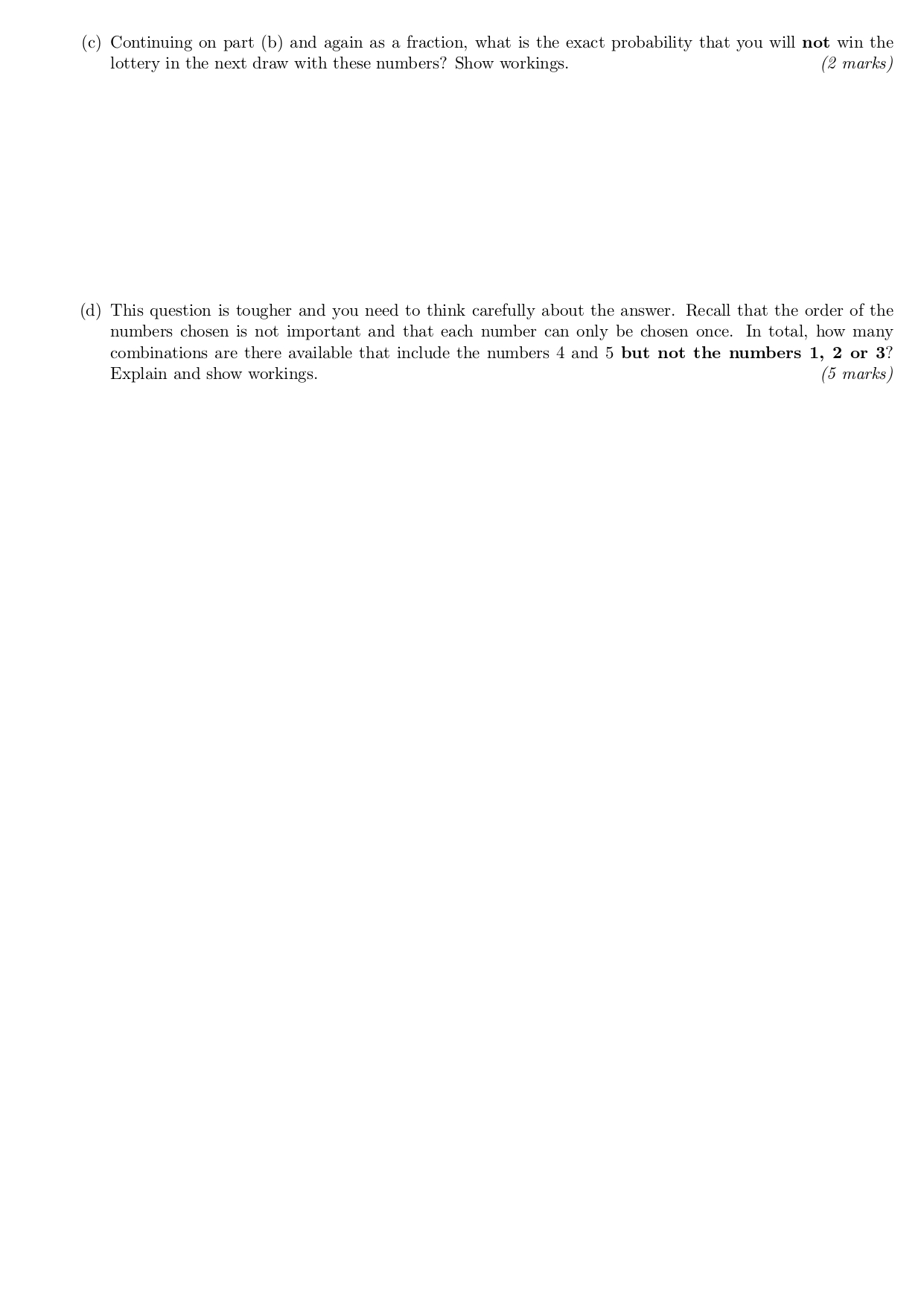
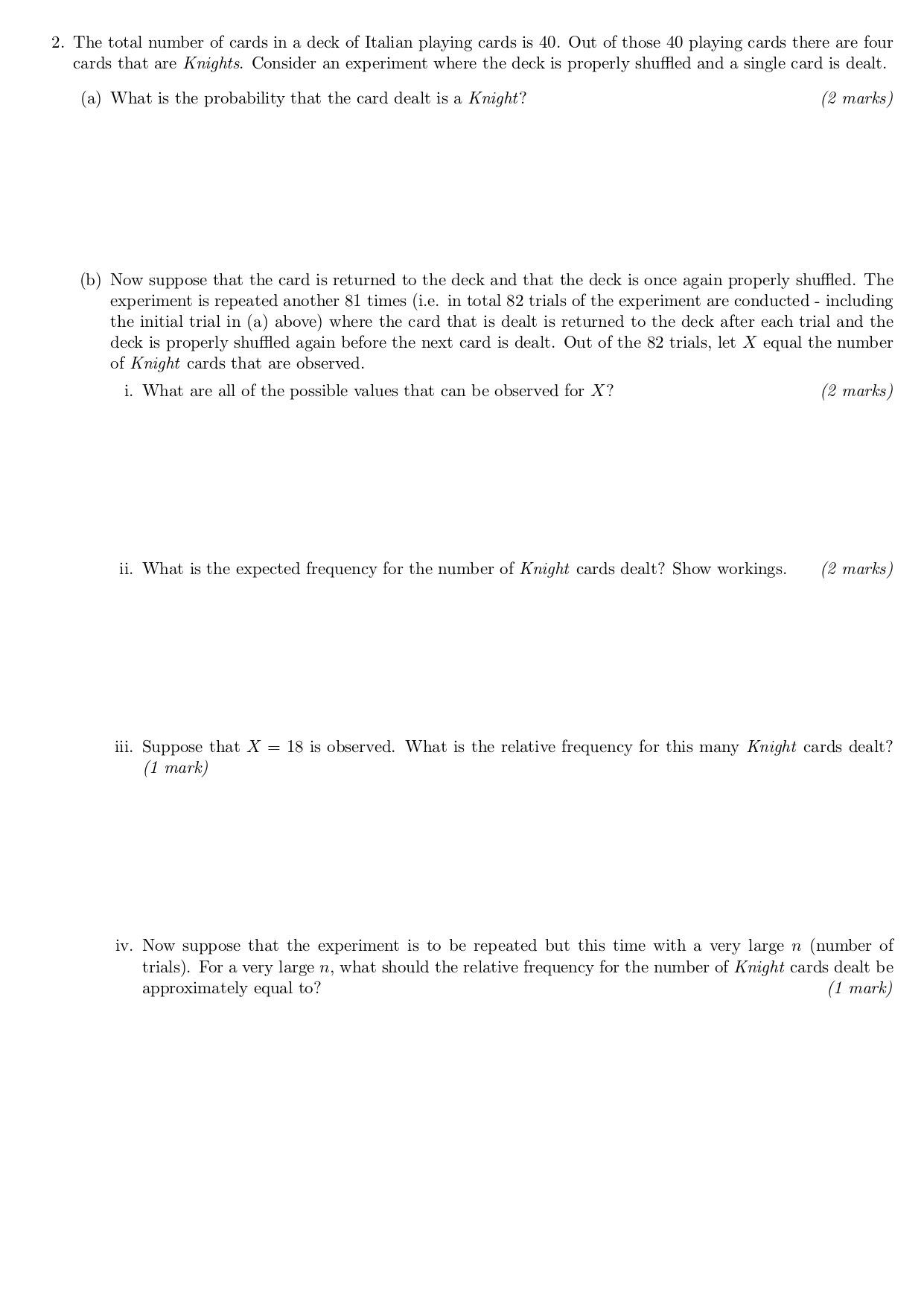
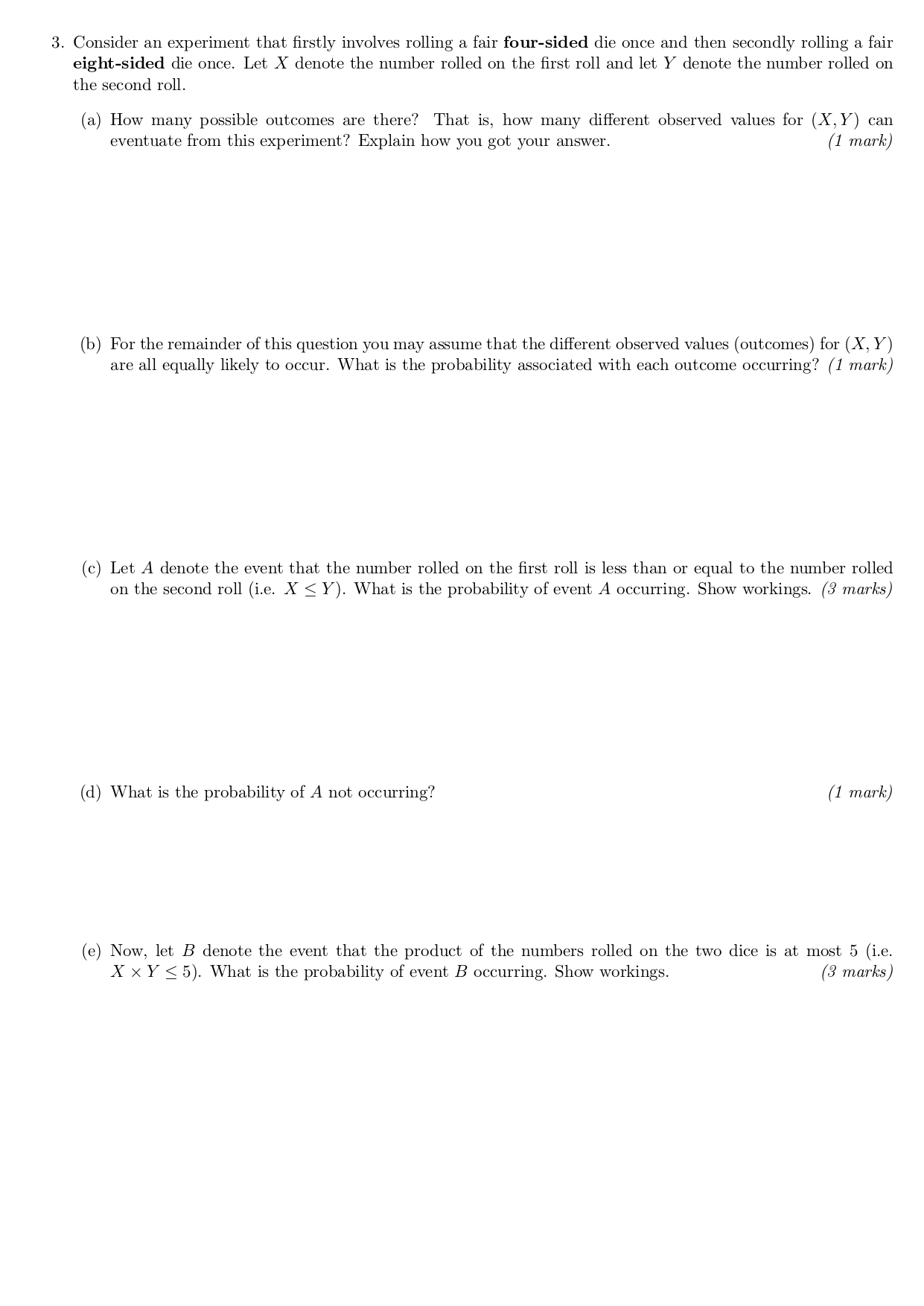
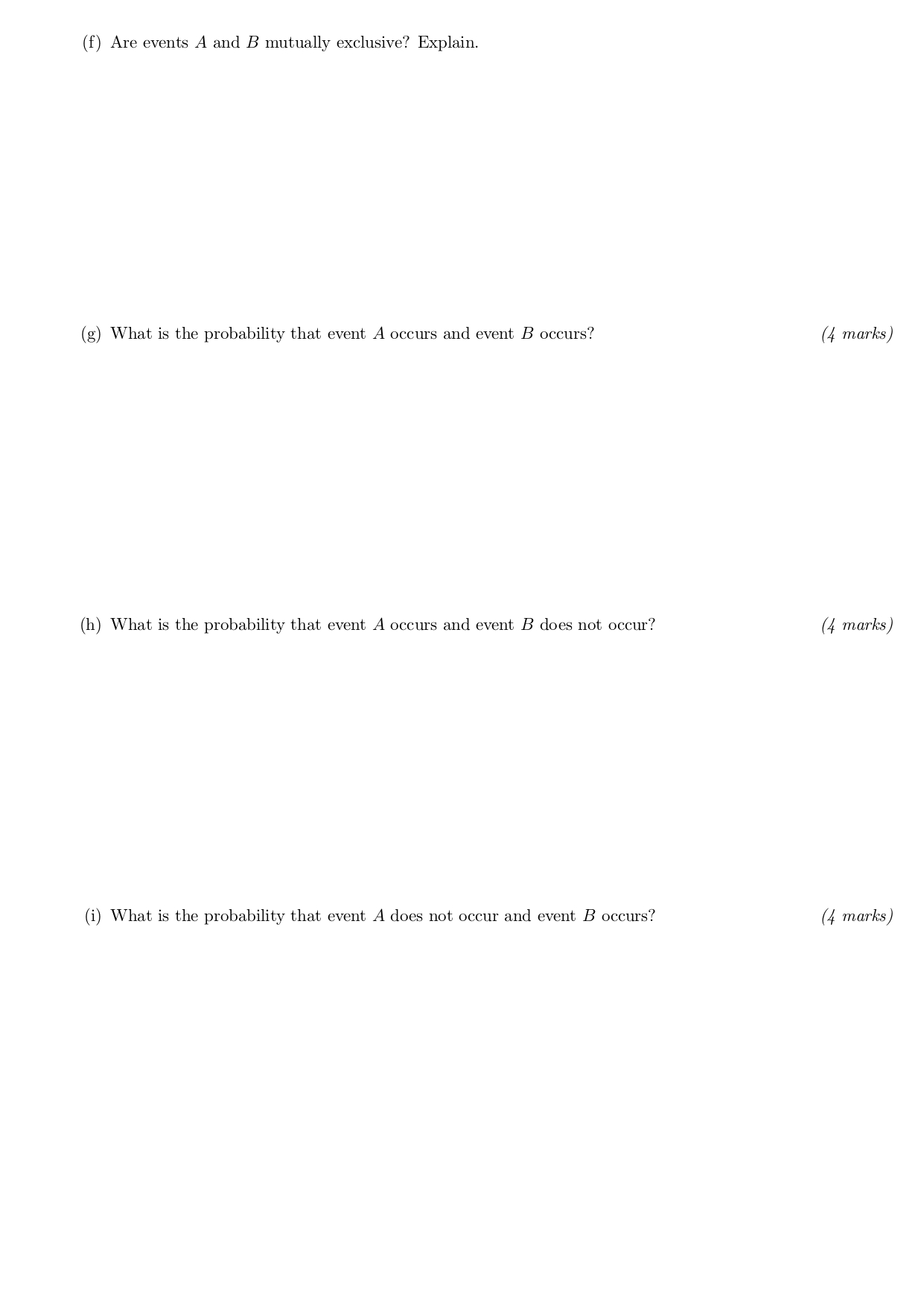
STA1DCT Assignment 4 Name: Student Number: Please read the instructions/hints in italics. When preparing your submission, you should delete the italicised text (including this instruction). Type (or write) you statement of originality here. Question 1: a) Answer here. b) Answer here. c) Answer here. d) Answer here. Question 2: a) Answer here. b) i) Answer here. ii) Answer here. iii) Answer here. iv) Answer here Question 3: a) Answer here. b) Answer here. c) Answer here. d) Answer here. e) Answer here. f) Answer here. g) Answer here. h) Answer here. i) Answer here. STA1DCT Assignment 4 Assignment 4 is due no later than 11:59pm Friday, 10th of May, 2024. You must submit your assignment electronically and as a single file via the LMS page for this subject. Where appropriate, your solutions must include your workings. In submitting your work, you are consenting that it may be copied and transmitted by the University for the detection of plagiarism. Please start with the following statement of originality, which must be included near the top of your submitted assignment: "This is my own work. I have not copied any of it from anyone else." IMPORTANT NOTE 1: The total possible marks for this assignment is 50. There are 40 marks associated with accuracy (i.e. correctness of your answers; the breakdown of these marks is indicated on this question sheet), a further five marks for completeness (you will only get the full five marks for completeness if you make a serious attempt to answer every question) and a further five marks for your written communication (e.g. clarity, spelling, grammar, correct use of notations etc.) STAIDCT: 40+ 5+ 5 = 50 marks. IMPORTANT NOTE 2: When you are asked to calculate an answer by hand, you may still use your calculator for basic calculations (e.g. multiplication, division, taking a square-root etc.) Your workings should show that you know how a formulae or process works. 1. Consider an 27-ball lottery game. In total there are 27 balls numbered 1 through to 27 inclusive. 5 balls are drawn (chosen randomly), one at a time, without replacement (so that a ball cannot be chosen more than once). To win the grand prize, a lottery player must have the same numbers selected as those that are drawn. Order of the numbers is not important so that if a lottery player has chosen the combination 1,2,3,4,5 and, in order, the numbers 5,3,1,2,4 are drawn, then the lottery player will win the grand prize (to be shared with other grand prize winners). You can assume that each ball has exactly the same chance of being drawn as each of the others. (a) Consider a population of size N = 27. How many different random samples of size n = 5 are possible from a population of N = 27? (2 marks) (b) Suppose that you choose the numbers 1, 2, 3, 4 and 5 ahead of the next lottery draw. As a fraction, what is the exact probability that you will win the grand prize in the lottery in the next draw with these numbers? (2 marks) (c) Continuing on part (b) and again as a fraction, what is the exact probability that you will not win the lottery in the next draw with these numbers? Show workings. (2 marks) (d) This question is tougher and you need to think carefully about the answer. Recall that the order of the numbers chosen is not important and that each number can only be chosen once. In total, how many combinations are there available that include the numbers 4 and 5 but not the numbers 1, 2 or 3? Explain and show workings. (5 marks) 2. The total number of cards in a deck of Italian playing cards is 40. Out of those 40 playing cards there are four cards that are Knights. Consider an experiment where the deck is properly shuffled and a single card is dealt. (a) What is the probability that the card dealt is a Knight? (2 marks) (b) Now suppose that the card is returned to the deck and that the deck is once again properly shuffled. The experiment is repeated another 81 times (i.e. in total 82 trials of the experiment are conducted - including the initial trial in (a) above) where the card that is dealt is returned to the deck after each trial and the deck is properly shuffled again before the next card is dealt. Out of the 82 trials, let X equal the number of Knight cards that are observed. i. What are all of the possible values that can be observed for X? (2 marks) ii. What is the expected frequency for the number of Knight cards dealt? Show workings. (2 marks) iii. Suppose that X = 18 is observed. What is the relative frequency for this many Knight cards dealt? (1 mark) iv. Now suppose that the experiment is to be repeated but this time with a very large n (number of trials). For a very large n, what should the relative frequency for the number of Knight cards dealt be approximately equal to? (1 mark) 3. Consider an experiment that firstly involves rolling a fair four-sided die once and then secondly rolling a fair eight-sided die once. Let X denote the number rolled on the first roll and let Y denote the number rolled on the second roll. (a) How many possible outcomes are there? That is, how many different observed values for (X,Y) can eventuate from this experiment? Explain how you got your answer. (1 mark) (b) For the remainder of this question you may assume that the different observed values (outcomes) for (X, Y) are all equally likely to occur. What is the probability associated with each outcome occurring? (1 mark) (c) Let A denote the event that the number rolled on the first roll is less than or equal to the number rolled on the second roll (i.e. X Y). What is the probability of event A occurring. Show workings. (3 marks) (d) What is the probability of A not occurring? (1 mark) (e) Now, let B denote the event that the product of the numbers rolled on the two dice is at most 5 (i.e. XxY5). What is the probability of event B occurring. Show workings. (3 marks) (f) Are events A and B mutually exclusive? Explain. (g) What is the probability that event A occurs and event B occurs? (4 marks) (h) What is the probability that event A occurs and event B does not occur? (4 marks) (i) What is the probability that event A does not occur and event B occurs? (4 marks)
Step by Step Solution
There are 3 Steps involved in it
Step: 1

Get Instant Access to Expert-Tailored Solutions
See step-by-step solutions with expert insights and AI powered tools for academic success
Step: 2

Step: 3

Ace Your Homework with AI
Get the answers you need in no time with our AI-driven, step-by-step assistance
Get Started


